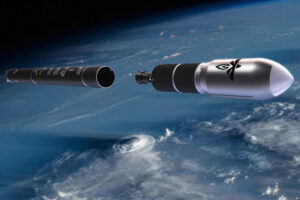Better Than Starship? China Builds And Tests Nuclear Space Engine For Interplanetary Flights
21st Mar 2024
Scientists from over ten research institutes and universities across China have developed nuclear fission technology that could power large-scale exploration of the Moon, Mars, and distant planets. The Chinese prototype nuclear reactor system has already successfully undergone initial ground tests and can surpass the Starship’s system.
Why Is The Chinese Nuclear Reactor System Innovative?
The Chinese engineers’ technological advancements were described in the peer-reviewed journal Scientia Sinica Technologica by the Chinese Academy of Sciences. According to the paper, the key technological solutions will shrink a megawatt-class reactor to an unprecedented size. At the same time, it will be seven times more powerful than a rival system being built by NASA.
Compact, Easy-To-Launch, And Long-Living System
The paper also reveals that once operational in space, the 1.5-megawatt reactor and its heat sink may reach the height of a 20-storey building. However, when on the ground, they will compactly fold into a container-sized space, weighing less than eight tonnes.
According to the researchers, led by Wu Yican from the academy, the reactor system’s design makes it “easy to load and launch by rocket.” Additionally, it will be capable of sustaining stable operations for extended durations in challenging space environments.
Its powerful energy source will enable high-mass, round-trip transportation for both crewed and cargo space flights. Additionally, the nuclear-powered spacecraft could complete a round trip between the Earth and Mars in just three months.
Chinese Nuclear Reactor System vs Starship
On the other hand, methane-fueled Starship, developed by SpaceX in the US, may require at least seven months to travel to Mars, as per certain estimates. Even a one-way journey to the red planet would necessitate an extensive life support system.
How Does The Chinese Nuclear Reactor System Work?
The Chinese nuclear reactor system is projected to produce temperatures reaching up to 1,276 degrees Celsius (2,328.8 Fahrenheit) by fissioning uranium fuel, surpassing the operational temperatures of typical commercial nuclear plants. This intense heat will cause inert elements helium and xenon, in their liquid forms, to expand into gases, thereby propelling a generator. The resulting chain reaction generates fast neutrons, ensuring an efficient and uninterrupted power supply for at least 10 years.
Furthermore, scientists highlight that utilising liquid lithium enables the reactor to be more compact due to the element’s high thermal conductivity and low weight.
The scientists explained that by employing liquid lithium, they could reduce the size of the reactor due to the element’s high thermal conductivity and lightweight properties.
Successful Tests For The Chinese Nuclear Reactor System
The tests offered an initial display of the viability of integrating a lithium-based cooling system with a Brayton generator.
Conventionally, reactor designs allocate considerable space for a heat exchanger and radiation shield. However, Wu and his team revealed that they have devised a technology merging these two components into a single unit.
What’s Next For The Chinese Space Exploration?
Further research and development efforts for the scientists will primarily concentrate on ensuring the safety of nuclear reactors during both launch and operation phases. A crucial requirement is that there should be no risk of a nuclear explosion, even in the event of a reactor falling back to Earth.
Additionally, the project team intends to implement artificial intelligence in the long-term unmanned operation of space reactors. This technology will be utilized to autonomously diagnose and address any malfunctions or faults that may occur.
“Our country is in a new era. We plan to embark on deep space exploration missions such as manned lunar exploration, asteroid exploration, flying by Jupiter, and exploring the edges of the solar system. [Space reactors] will be crucial in these endeavours,” Wu and his team said.
![Beauty of the Pink Moon And Lyrid Meteor Shower in This Week’s Best Astrophotos [19-26 April] Beauty of the Pink Moon And Lyrid Meteor Shower in This Week’s Best Astrophotos [19-26 April]](https://orbitaltoday.com/wp-content/uploads/2024/04/Pink-Moon-is-on-its-way-above-the-mountains-1-300x300.jpg)
![Beyond Earth’s Blue: What Are the Water Worlds Across the Solar System? [A Comparative Analysis] Beyond Earth’s Blue: What Are the Water Worlds Across the Solar System? [A Comparative Analysis]](https://orbitaltoday.com/wp-content/uploads/2024/03/water-in-solar-system-1-300x144.jpg)




Thank you for your comment! It will be visible on the site after moderation.